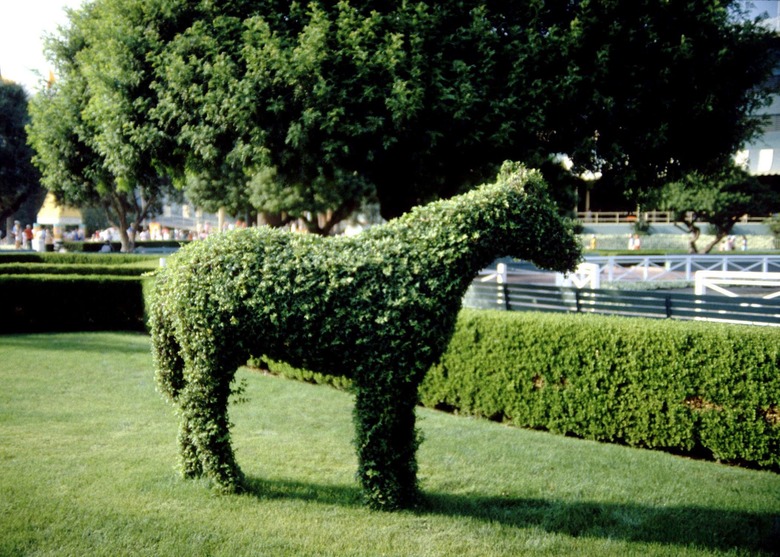How To Make Animal Topiary Wire Frames
Things Needed
- Poultry netting
- Wire cutters
- Pliers
- Sphagnum moss
- Water
- Monofiliment thread or fishing line
- Plants
- Hair pins
Tip
Wrapping the poultry netting around a stuffed animal and then carefully removing the stuffed animal creates a topiary frame or the stuffed animal. Lavender, jasmine, ivies and other trailing vines are appropriate plants for animal topiary.
Topiary is the art of trimming, training and shaping trees, shrubs and plants into specific shapes that are elegant, artistic or whimsical. While a row of perfectly shaped conical shrubs lining the driving create a sophisticated landscape, you can imagine the how fun a couple of giraffes or a playful teddy bear on your front lawn would look. No lawn ornaments or yard decorations ever looked so interesting. With a few tools, some wire and a little imagination, you can create the framework to start your own topiary menagerie.
Step 1
Choose the animal for your topiary frame. Teddy bears, fish, birds and frogs are all popular topiary animals forms.
Step 2
Form the largest part of the body using the poultry netting, wire cutters and pliers. Connect the cut ends by bending the wires over each other with the pliers.
Step 3
Form and attach legs, arms, ears and head using the poultry netting, wire cutters and pliers. Attach each piece to the main body by bending the wires over each other.
Step 4
Soak sphagnum moss in water until it is completely moist.
Step 5
Stuff the moss into small areas of the frame first like ears, hands, feet, legs and tail. Pack the moss in tightly and evenly to help with water retention.
Step 6
Wind fishing line or monofiliment thread around the areas as you stuff them in order to add stability for the plants.
Step 7
Fill larger areas with moist sphagnum moss, winding the monofiliment around those sections also. Leave a few pockets in these larger sections for your plants.
Step 8
Remove the plants form their pots, leaving the soil attached to the roots. Place the root balls in the pockets created for them. If the root ball is too large for the space, gently remove some of the soil. The root ball must be well within the moss. Cover the root completely with more moss.
Step 9
Attach trailing stems along the frame with hair pins securely, covering as much of the frame as possible with the stems of the plants you just planted. As the plants grow, secure the new growth to the frame or trim it off if it is too long for the frame. The stems will eventually grow roots where they touch the moss.
